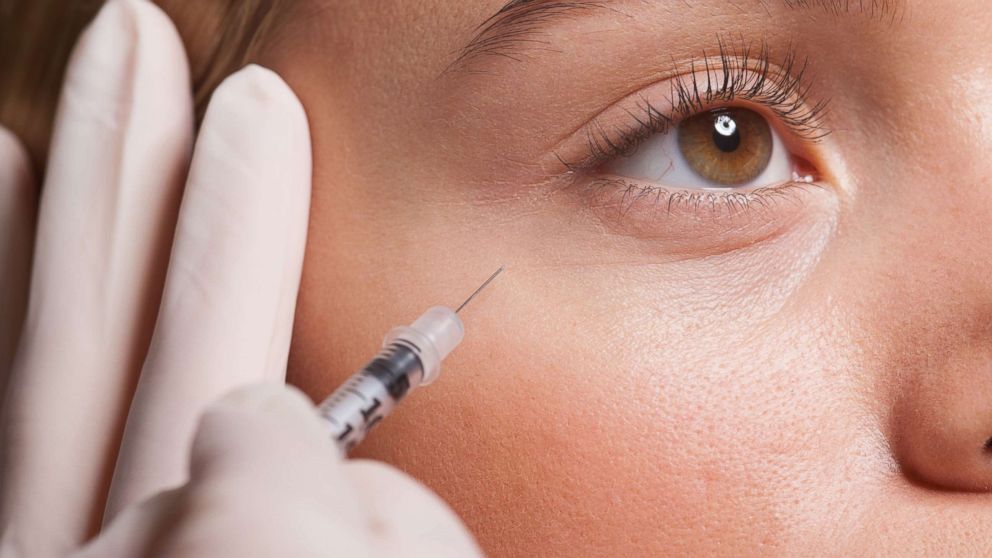


More than 7 million -- yes million -- Americans got Botox in 2017, the highest number ever, according to the American Society of Plastic Surgeons (ASPS).
And while the minimally invasive procedure is considered generally safe, it's pretty easy to tell when Botox has gone bad.
Dr. Rian A. Maercks, a Miami-based plastic surgeon and author of the blog "Why does everyone look so weird," told "Good Morning America" that Botox and the similar Dysport may not be the best way to alleviate wrinkles after all.
First, he said, "a patient needs to understand that using Botox to alleviate all wrinkles will have negative effects such as separating and lowering the brows."
Maercks called this the “the Botox V deformity" and it's what causes many people who get Botox to look surprised, he said.
And as the segment of women getting Botox trends younger and younger -- procedures on 20- to 29-year-olds was up 5 percent in 2016 compared to the year prior, according to the ASPS -- bad Botox can result in the patient actually looking older than their years.
Dr. Norman Rowe, a New York City-based plastic surgeon, agreed Botox can have the opposite of its intended effect for some patients.
"If Botox is injected into the forehead to diminish wrinkle and it actually drops the forehead and upper eyelid, it gives an aged, tired appearance," Rowe told "Good Morning America." "In our upper eyelid, there is a muscle that opens it. As we age, it becomes weaker, and we naturally use our forehead muscles to help open our upper eyelid. If Botox, in turn, is injected into the forehead muscles, they will no longer assist in opening the upper lid. This causes an eyelid drop."
He added: "The severity depends on how much the forehead assists the upper lid in opening the lid."
Maercks instead recommends Aesthetic Facial Balancing, a procedure he created. It involves using the body’s own fat or filler in a variety of specific sub-units of the face to create a balanced appearance, rather than only injecting one to two shallow areas.
That's not to say Botox can't be done well.
"The secret to well-done Botox is to distribute the effect tapering the effect of the forehead muscle and gently treating the muscle next to the upper eyelid," he said.
Here are his top tips for what patients should -- and should not -- ask their doctor:
1. Ask for a subtle treatment with a goal of a balanced brow.
2. Patients should never ask for wrinkles to be eradicated with Botox. Ask if the practitioner thinks they can deliver better results with fillers. The muscles to the side of the upper lid should always be treated subtly to avoid the strange look.
3. Draw the practitioner’s attention to your desire to avoid a “V” deformity.
4. Don’t ask for maximal results -- shoot for subtlety and brow balance, and accept the level of wrinkle reduction that results.